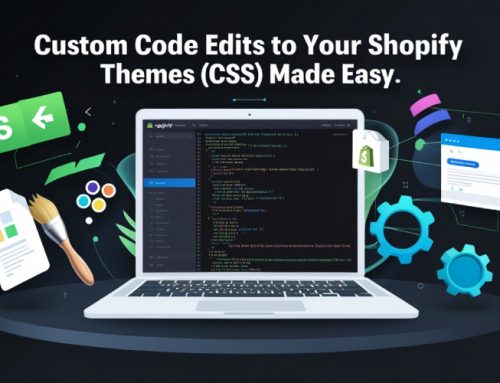2. Techniques to improve Shopify SEO ranking
The use of keywords
The emergence of SEO techniques was led by inserting pertinent targeted keywords in the content on websites. Initial search engine traffic was driven by the frequency and relevance of these keywords on different websites. However, as internet traffic increased and eCommerce websites mushroomed, each of them focusing on keyword generation to drive organic footfalls, keywords started losing their pre-eminence due to overuse. In other words, while the use of keywords is necessary for search engines, it alone does not guarantee that the site would be ranked first among its peers. SEO has moved beyond the use of keywords; despite this, keywords do retain their importance.
Site structure
The way content is organized on your Shopify website can lead to an improvement in its Shopify SEO rank. When visitors and shoppers are able to easily find their way around your website, and can quickly identify the things they are looking for, they tend to spend more time on your website, and also visit it repeatedly for all their future needs, thus giving a boost to your site’s SEO rankings. The time spent on a website and the number of repeat visits tell search engines that your website offers value to the visitor. This results in an improvement in your site’s ranking. The best shopping sites are structured in such a way that the desired product is no more than 3-4 clicks away from the homepage. This prevents the customer’s focus from being diverted when visiting your website, thus helping in early closure of the purchase. It also allows the search engine algorithms to crawl through your website more easily.
Credibility
Sites which contain active updated contact details and information about the owner/manager are considered more convincing, and rank higher. For better SEO ranking of your Shopify website, it is preferable to share an email id and phone number which are current and regularly attended.
Site Speed
Sites which enhance the visitor’s experience rank higher since users tend to stay with such sites for longer and explore farther. Site speed needs to be optimized across various devices – laptops/desktops, tablets and smartphones.
Mobile-friendly
Browsing and shopping via mobile phones is growing 3 times as fast as eCommerce using desktops. This has given rise to a whole new term – mCommerce – for eCommerce which is being driven by mobile phones. A website with a mobile-friendly interface is likely to end up converting more shoppers into customers, thus improving its Shopify SEO ranking.
Ranking of product pages
While optimizing your Shopify website, ensure that the top-selling product pages are placed as close to the homepage as possible. If you are building your website from scratch, you can always take the assistance of Shopify experts such as oscprofessionals.com, who identify the top-searched products from your range of offerings and optimize their placement across the website.
Eliminate duplicate content
It is tempting to copy the exact description of a product from the manufacturer’s website and paste it on your Shopify site. However, search engines frown on duplicated and plagiarized content. The presence of such content results in down-grading of website rankings. While internal content duplication may be tolerated by search engines, duplication of content from an external website can result in a search engine penalty.
Titles and Meta Description
While it is perfectly fine to use the product title and meta description from the manufacturer’s website, it is preferable if these are uniquely designed with original content.
Backlinks to your Shopify website
The number of links into your website will impact its ranking in search engines. Websites with more reference links to them are considered more dependable. For this, you can approach your manufacturer to provide a link to your Shopify store on their website – most manufacturers will not hesitate to do this for their authorized dealers. There may even be opinion pieces on the products which you sell, you can approach their authors or publishers to provide a link to your website in their articles. The link needs to look genuine and not contrived; it should flow into the body of the articles.
Website content
Last but not least, we return to a point related to the very first point. Keywords define the content, but the content on your website is much more than that. The number of first-time visitors on your Shopify website who translate into buyers on their first visit is miniscule – less than even 1%. However, publishing informational content (replete with all the keywords) educate visitors at different stages of their transition through your website. This improves the chance of them recalling your website and buying from you at some future date. Shopify already offers a blog called “News” for all its partners. You can also create other blogs for your website and post relevant and useful matter.
3. Conclusion
Every marketer and Shopify website owner dreams of a top 5 search engine ranking; the above tips ensure that your website consistently improves its rankings and outperforms its peers until it reaches the pinnacle. Apart from the above tips, there are other means such as image optimization, setting up of redirect pages and avoidance of error pages, use of the SEO tools provided by Shopify, and the use of related apps which help in optimizing Shopify SEO – these and more will be dealt with in our later blogs! For now, we wish you all the best for a successful Shopify website and Happy Selling!!










